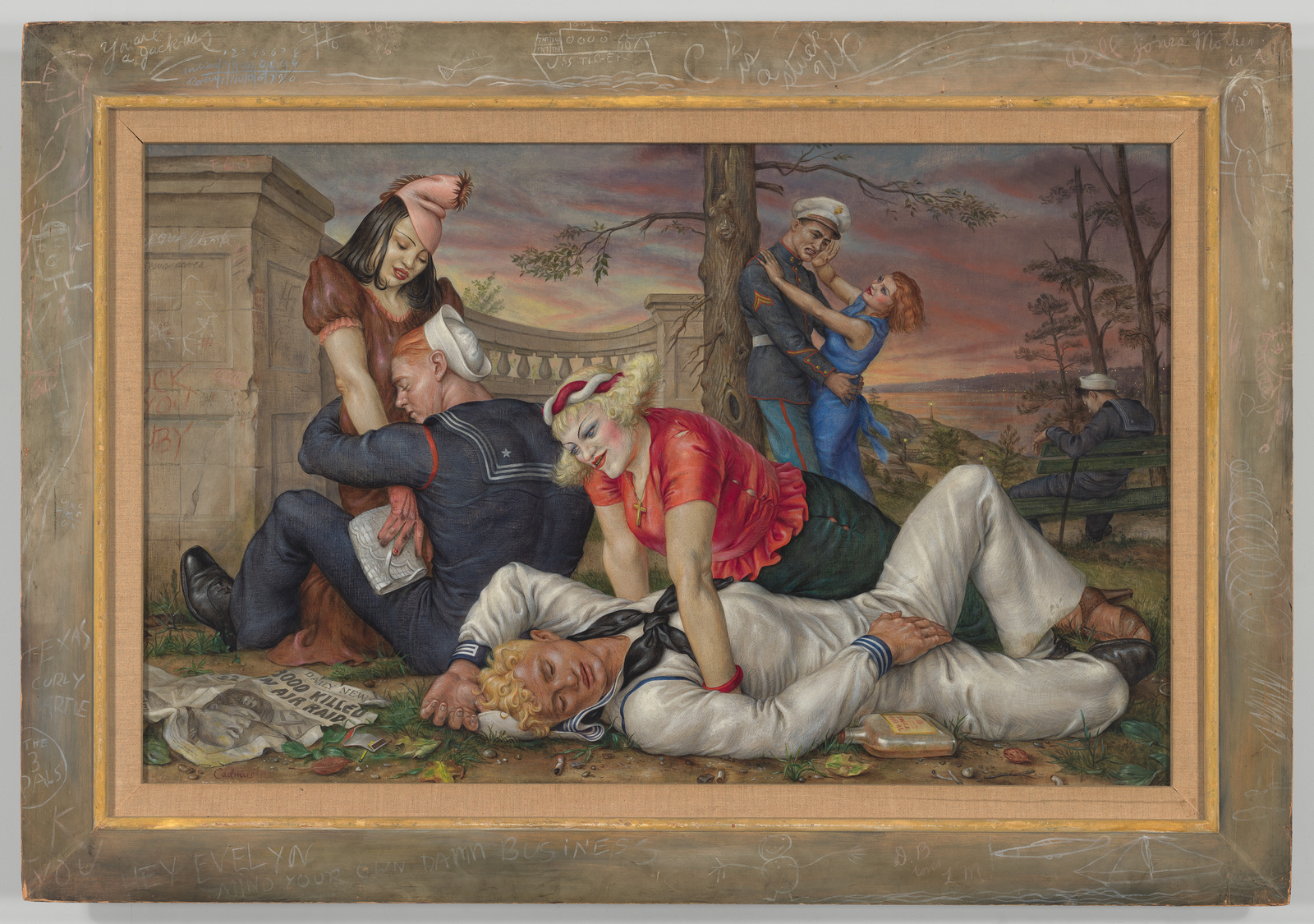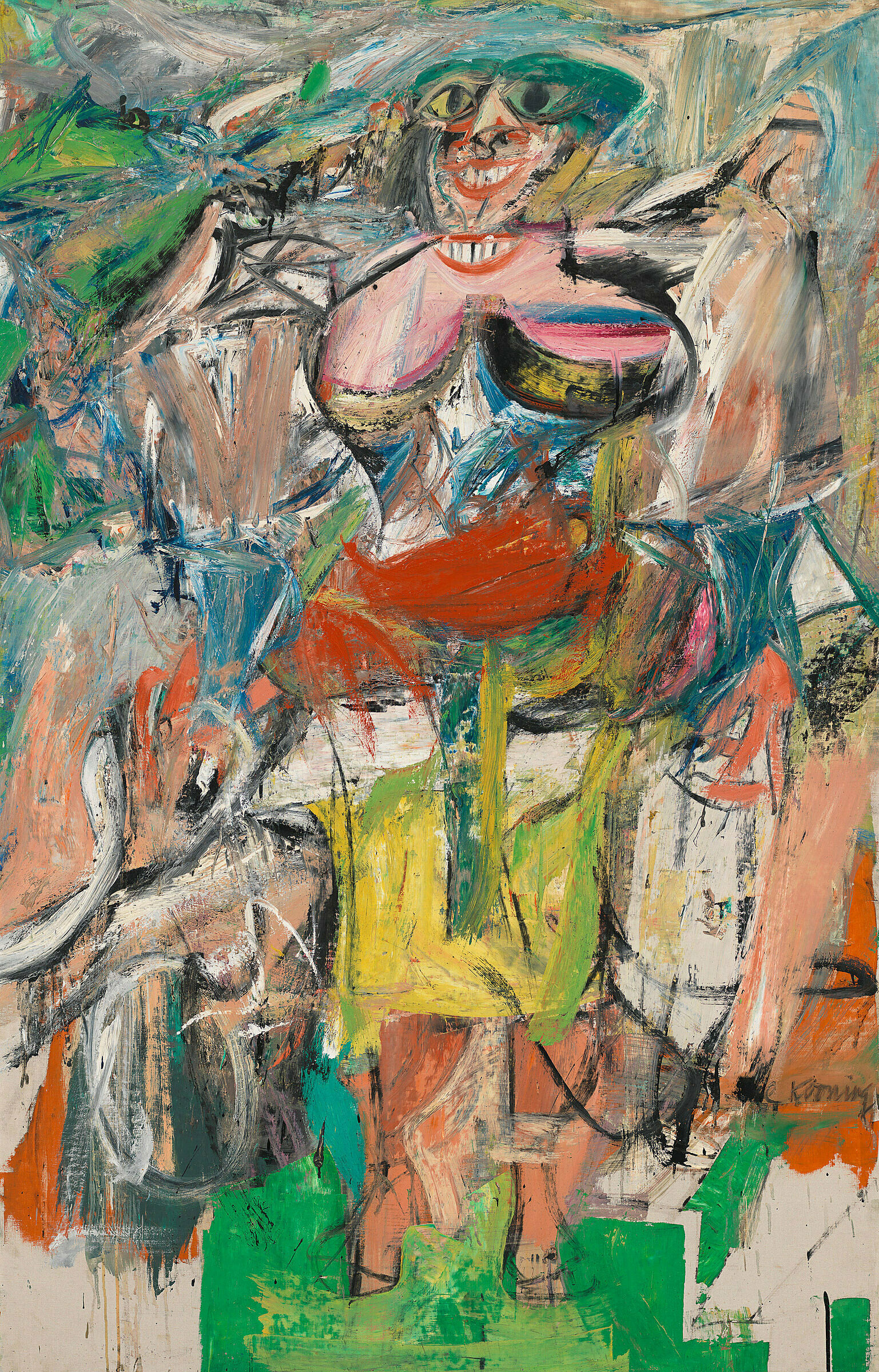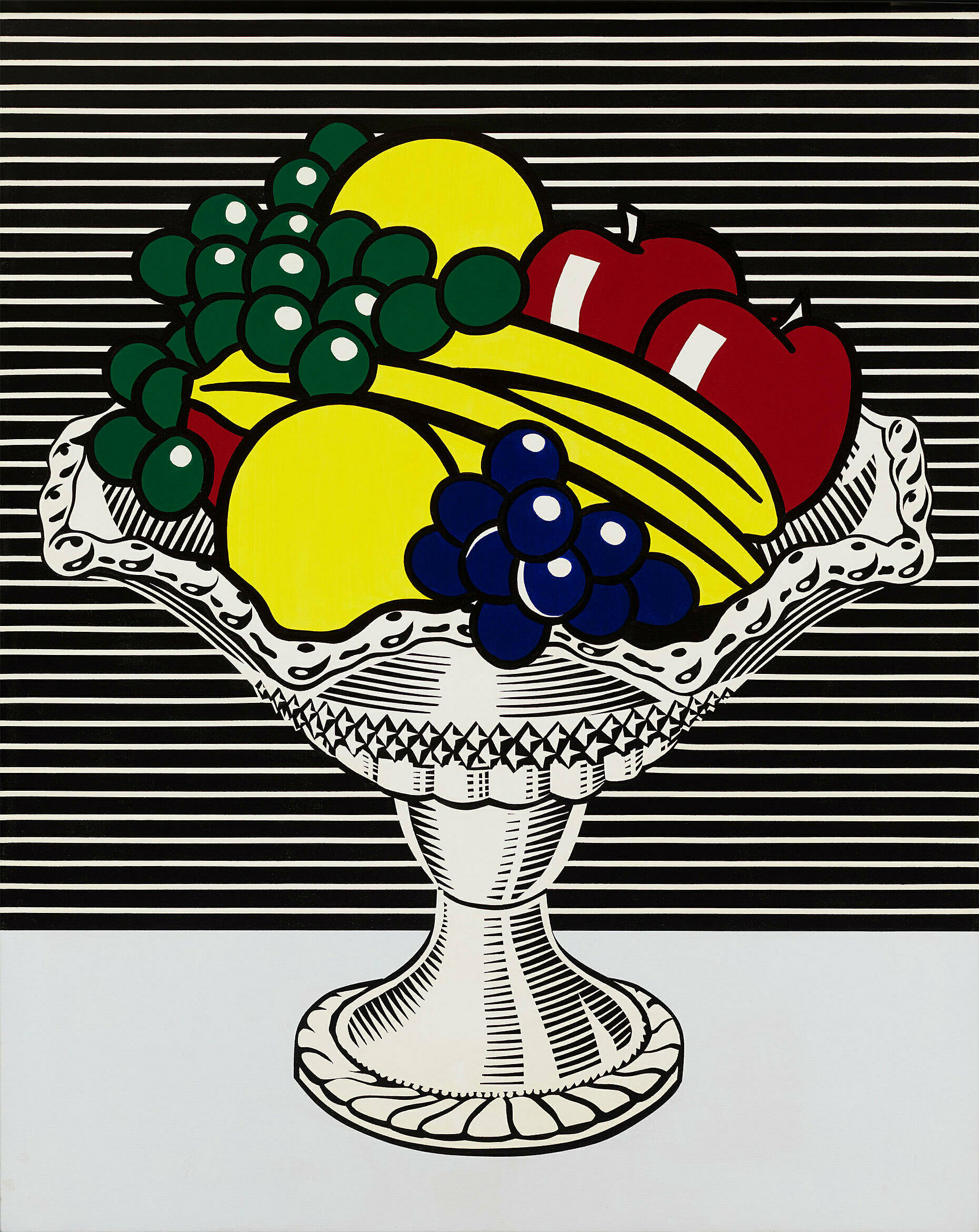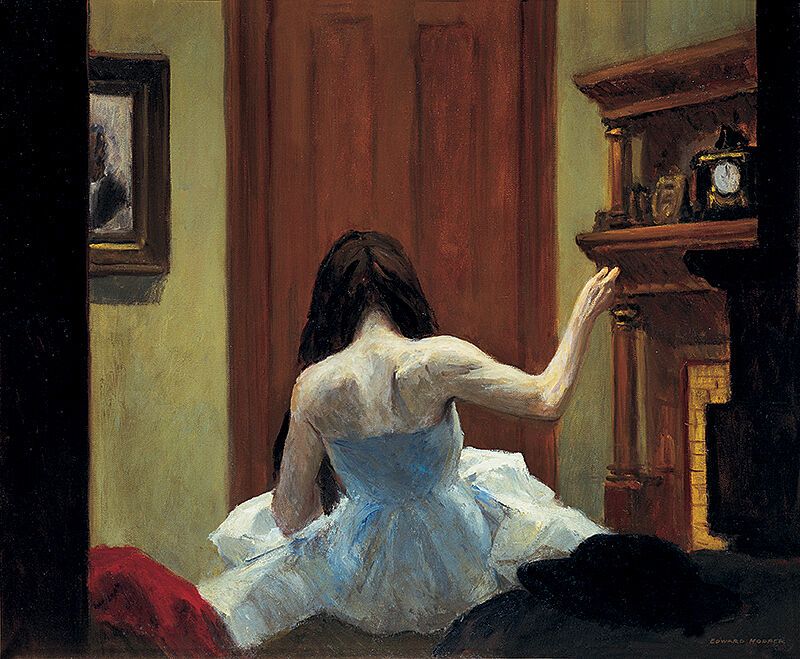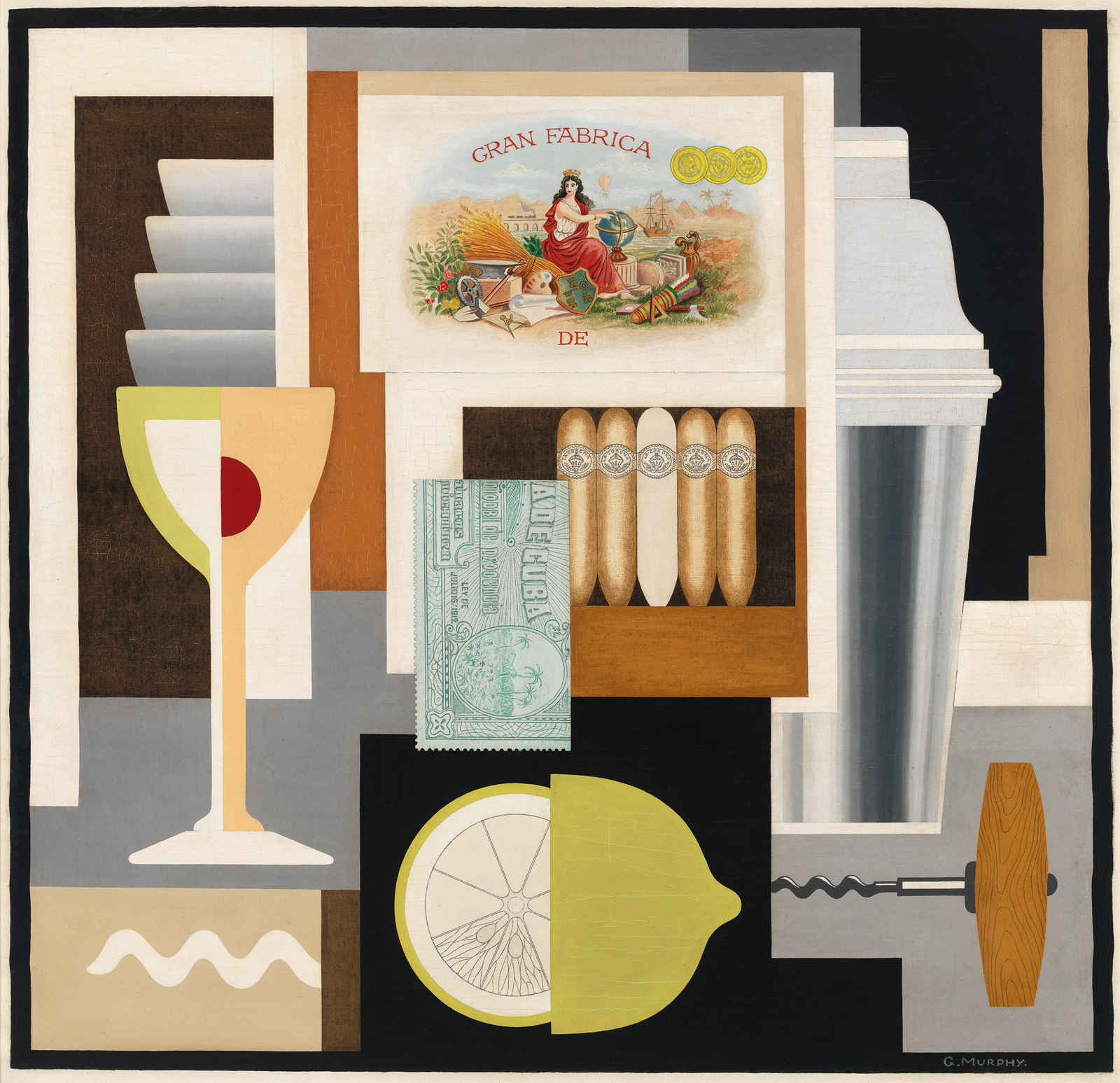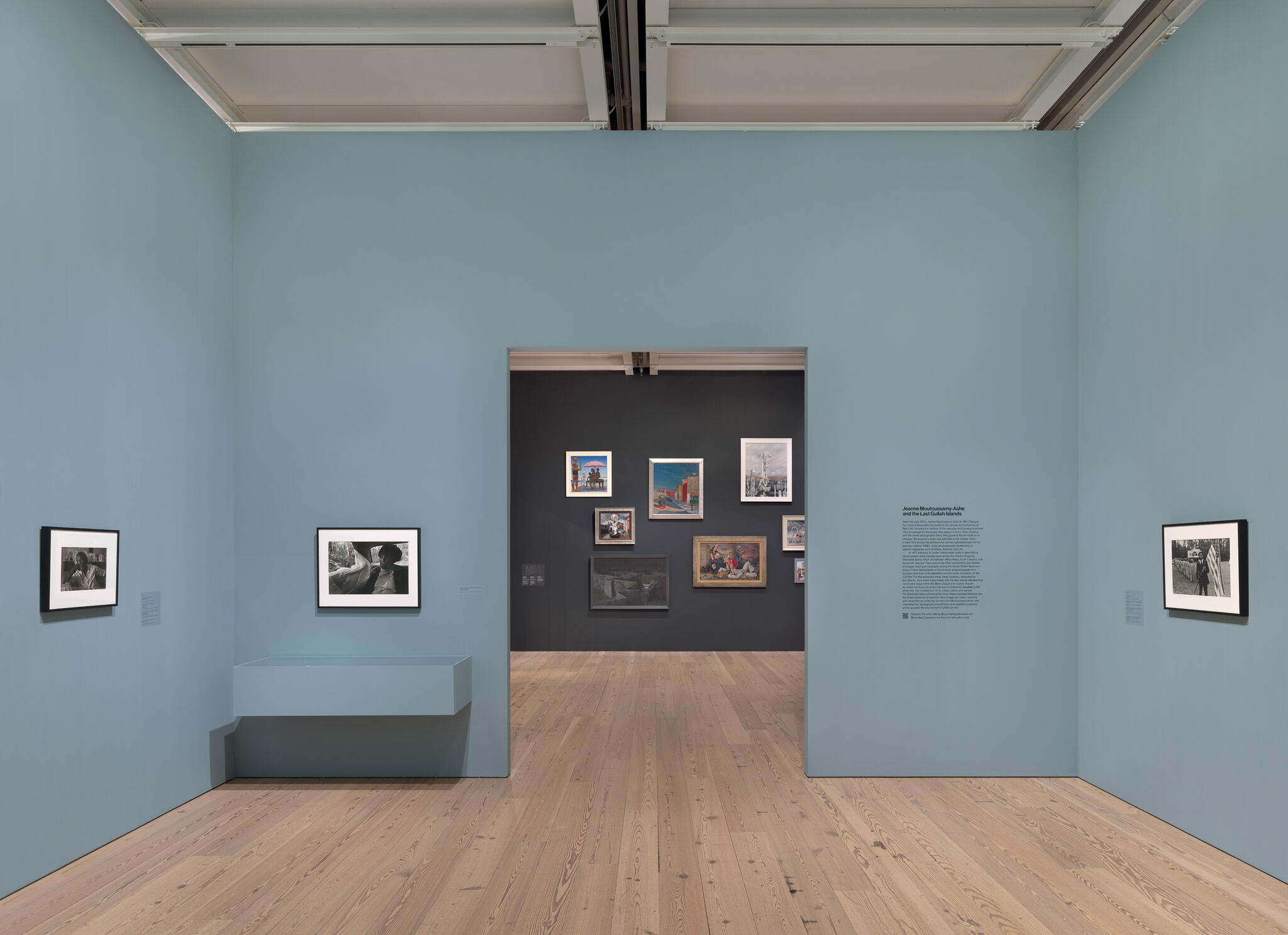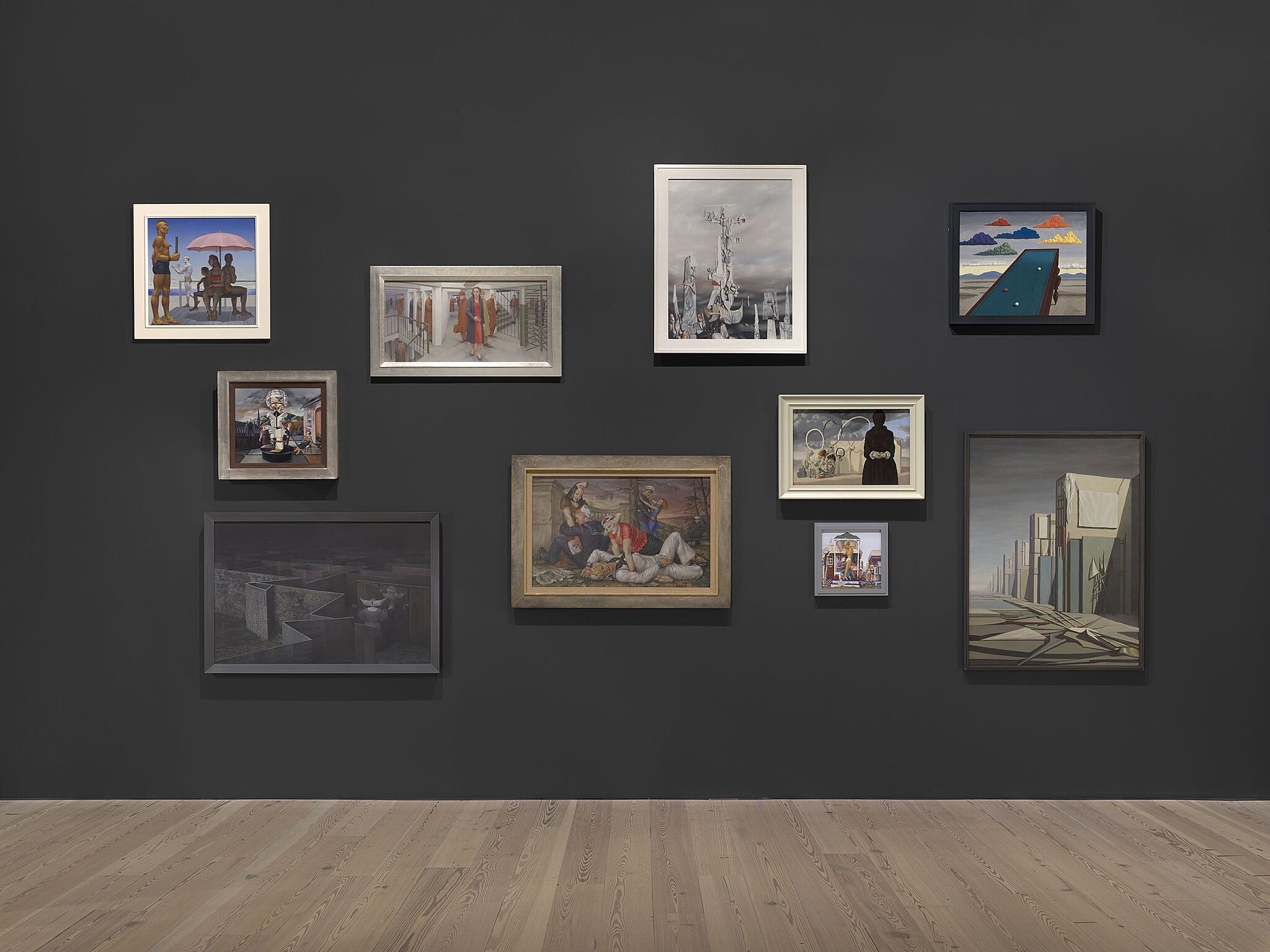Sailors and Floosies, the third painting in a trilogy on the theme of on-leave sailors that Paul Cadmus completed between 1933 and 1938, exemplifies the artist’s predilection for social satire. His use of tempera, a classical painting medium, and interest in articulating the musculature and anatomy of the human form recalled Italian Renaissance masters, but his subject matter was truly contemporary, even risqué, in its mockery of modern American life. Here, the artist exaggerates the tight fit of the sailors’ uniforms and the dresses clinging to the women’s bodies to heighten the scene’s sexual energy. The sailor in the foreground with one arm raised over his head, is modeled on the well-known Renaissance posture of the sleeping faun. His idealized classical beauty is juxtaposed with the vulgar, harpy-like “floosie” who hovers over him. Such acerbic scenes of carousing sailors (and the light in which they cast the Navy) generated intense debate in their time. The painting was first exhibited at the 1940 San Francisco World’s Fair, and promptly incited a national controversy that resulted in its removal from the walls—although it was reinstalled in the exhibition two days later.
Not on view
Date
1938
Classification
Paintings
Medium
Oil and tempera on linen mounted on composition board, with wood frame
Dimensions
Overall (framed): 33 11/16 × 48 1/2in. (85.6 × 123.2 cm)
Accession number
64.42a-b
Credit line
Whitney Museum of American Art, New York; gift of Malcolm S. Forbes
Rights and reproductions
© Estate of Paul Cadmus / Licensed by VAGA at Artists Rights Society (ARS), New York

